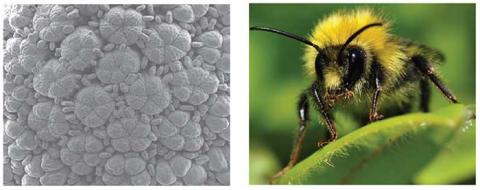
Our area of interest is the evolution and development of floral traits that are important in attracting animal pollinators. We are a diverse and friendly group of people, keen to welcome anyone who shares our enthusiasm for plant development, evolution, flowers and pollination.
By understanding how plants build traits that attract particular animals we aim to understand the diversification of the flowering plants. We are particularly interested in petal characters such as colour, texture and insect-mimicking spots. We use molecular genetic, systematic and developmental techniques to address these problems, and our lab incorporates a bee behavioural facility to explore pollinator responses.
Understanding plant-pollinator interactions in this integrated way provides us with tools to contribute to the design of strategies to protect biodiversity of plants and animals. It also allows us to engage with plant breeders to optimize pollinator attraction and ensure crop security. Projects include:
Petal epidermal morphology
Nectar spur development
Structural colour in plants
Petal spot development
Photo at the top of the page: from left to right: petal epidermis of a speedwell flower; 'Hibiscus trionum' flower; insect-mimicking spots on the capitulum of 'Gorteria diffusa'.


